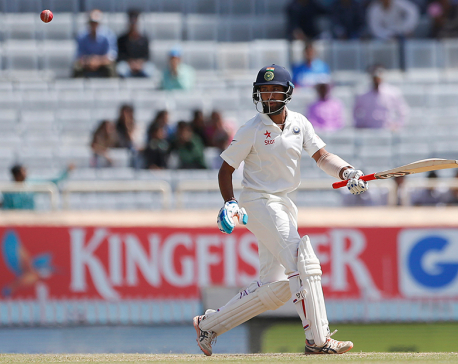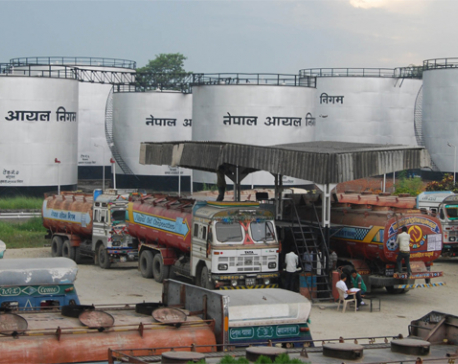
OR
Tomato price hits the roof
Published On: August 25, 2017 03:57 AM NPT By: Muna Sunuwar | @TheMunaSun

KATHMANDU, August 25: The price of tomato in the Kathmandu Valley has hit the roof due to low supply from the farms, traders say.
But this is not the only reason. Retailers have been found keeping high profit on potato. The wholesale price of big and small tomato was Rs 98 and Rs 52 per kg, respectively, on Thursday. But a snap survey conducted by Republica showed that average retail price of big and small tomato in different parts of the valley was Rs 130 and Rs 90, respectively, on Thursday. It is not the demand-supply situation, but retailers who fix price of tomato in the market.
Retailers are fixing price in an arbitrary manner as market monitors rarely inspect vegetables market. Yashoda Rai, a vegetable retailer, told Republica on Thursday that she has never seen market inspectors at her retail store. “We do add some profit margin as we pay house rent and transportation cost,” she said, adding: “But price would have been the same in all retail shops had the government conducted regular monitoring.”
Suresh Pradhan of Bhainsepati-based Aslesha Agro Farm said that farmers do not get good price for their produce. “We are paid almost the same price for tomato throughout the year, while traders keep big profit margin citing off-season,” he said, adding: “We are not getting good price even though we produce organic products.”
Aslesha Agro farm has been selling big tomato at Rs 70-75 per kg, according to Pradhan.
Bhimsen Raj Bharati, a wholesaler at Kalimati Fruits and Vegetables Market, said price of big tomato is high as it is usually imported from India. “The price has increased in the Nepali market as price of tomato has increased in India itself. Also, we have to add transportation cost,” he added.
Vegetable production generally falls in the monsoon which directly affects its prices.
Kiran Kumar Sah, a Kalimati-based retailer, says retailer like her buy less quantity of vegetables and try to make maximum profit. “We have to pay high rent and transportation cost. Also, we have to set aside certain percent of profit to compensate for loss as vegetables are highly perishable,” she said, adding, “We will have to face huge loss if all the vegetable are not sold out in a day.”
Binaya Shrestha, deputy director of Kalimati Fruits and Vegetable Market Development Board (KFVMDB), said that the retailers can keep profit margin of up to 20 percent. But there is no mechanism to monitor vegetables prices in the market.
You May Like This

3rd test: Pujara hits 130 as India trails Australia by 91
RANCHI, India, March 18: Cheteshwar Pujara hit an unbeaten 130 Saturday as India reached 360-6 at stumps on day three of... Read More...

Fuel shortage hits eastern Nepal as tanker drivers go on strike
BIRATNAGAR, Nov 23: Supply of petroleum products from the Biratnagar-based regional depot of Nepal Oil Corporation (NOC) has come to... Read More...

13 dead, 6 injured as fire hits bar in French city
PARIS, Aug 6: A fast-moving fire swept through a birthday party in the basement of a bar in the northwest... Read More...




Just In
- Govt receives 1,658 proposals for startup loans; Minimum of 50 points required for eligibility
- Unified Socialist leader Sodari appointed Sudurpaschim CM
- One Nepali dies in UAE flood
- Madhesh Province CM Yadav expands cabinet
- 12-hour OPD service at Damauli Hospital from Thursday
- Lawmaker Dr Sharma provides Rs 2 million to children's hospital
- BFIs' lending to private sector increases by only 4.3 percent to Rs 5.087 trillion in first eight months of current FY
- NEPSE nosedives 19.56 points; daily turnover falls to Rs 2.09 billion















Leave A Comment